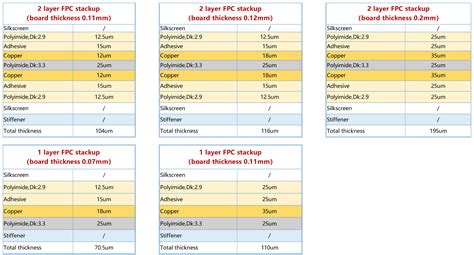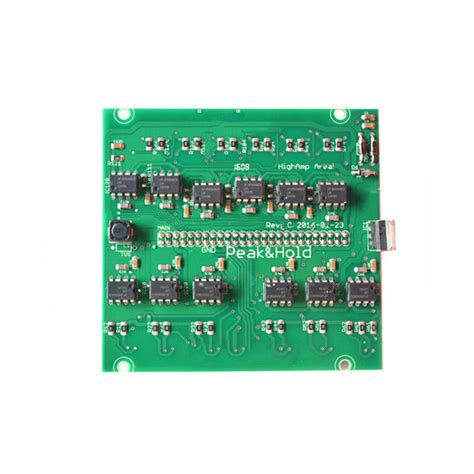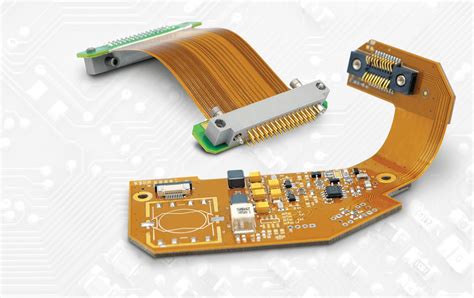Revolutionizing Electronics: The Power of Aluminum PCBs
Key Takeaways
Advantages of Aluminum PCBs in Electronics Manufacturing
Aluminum PCBs, also known as aluminum-backed PCBs, have emerged as a game-changer in the electronics industry. Their unique properties offer a host of benefits that revolutionize electronic circuitry and manufacturing processes. Let’s explore some key advantages of aluminum PCBs.
Enhanced Durability and Reliability
One significant advantage of aluminum PCBs is their enhanced durability. The use of aluminum as the base material provides excellent mechanical strength, ensuring that the PCB can withstand various operating conditions. This durability translates into increased reliability and longevity for electronic devices.
Efficient Heat Dissipation
Heat dissipation is a critical consideration in electronic design since excess heat can compromise performance and lead to component failure. Aluminum PCBs excel in this aspect due to their exceptional thermal conductivity. The high thermal conductivity of aluminum helps dissipate heat efficiently, preventing overheating issues and ensuring optimal performance even under demanding conditions.
Improved Electrical Performance
Aluminum PCBs offer improved electrical performance compared to traditional alternatives. The low thermal expansion coefficient of aluminum ensures stability in the face of temperature changes, reducing the risk of solder joint failures and ensuring consistent electrical connections. Additionally, the use of aluminum allows for better signal conductivity, enabling high-speed data transmission without compromising signal integrity.
Versatility in Various Applications
Aluminum PCBs find broad applicability across different industries and applications. From LED lighting systems to power electronics, automotive components, and more, their versatility knows no bounds. With its ability to accommodate complex circuit layouts and high-power requirements, aluminum PCBs have become a go-to choice for manufacturers seeking reliable solutions across diverse domains.
Cost-Effectiveness and Environmental Advantages
Another notable advantage of aluminum PCBs lies in their cost-effectiveness and environmental benefits. Aluminum is widely available at a lower cost compared to other materials used in PCB manufacturing. Its abundance contributes to cost savings during production without compromising quality. Furthermore, aluminum is highly recyclable, making it a sustainable choice for environmentally conscious manufacturers.
Future Advancements and Possibilities in Aluminum PCBs
As technology advances, aluminum PCBs are expected to play an increasingly pivotal role in the electronics industry. Ongoing research and development efforts aim to further enhance their properties and performance, pushing the boundaries of what is achievable. With continuous innovation, we can anticipate even higher levels of performance, efficiency, and reliability from aluminum PCBs in the future.
In conclusion, aluminum PCBs offer a multitude of advantages that are revolutionizing the electronics manufacturing landscape. From enhanced durability and efficient heat dissipation to improved electrical performance and versatility in applications, their potential is immense. Moreover, their cost-effectiveness and environmental advantages make them a compelling choice for manufacturers worldwide. As we look toward the future, aluminum PCBs hold great promise for advancing electronic circuitry and ushering in a new era of innovation.

Advantages of Aluminum PCBs in Electronics Manufacturing
Aluminum PCBs have gained significant attention in the electronics manufacturing industry due to their numerous advantages. These innovative circuit boards are revolutionizing the field by enhancing durability, heat dissipation, and electrical performance. Let’s delve into the benefits that aluminum PCBs offer and how they contribute to shaping the future of electronics.
Enhanced Durability and Reliability
Aluminum PCBs are renowned for their exceptional durability and reliability. The use of aluminum as a base material ensures robustness, making them resistant to mechanical stress, vibrations, and impact. This durability safeguards delicate electronic components from external factors, resulting in increased product lifespan and reduced maintenance costs.
Efficient Heat Dissipation
Heat dissipation is a critical concern in the electronics industry. Aluminum PCBs excel in this aspect due to the exceptional thermal conductivity of aluminum. The metal efficiently transfers heat away from sensitive components, preventing overheating and ensuring optimal performance even under demanding conditions. By effectively managing heat dissipation, aluminum PCBs contribute to the longevity and stability of electronic devices.
Improved Electrical Performance
The electrical performance of electronic circuits relies on effective signal transmission without losses or interference. Aluminum PCBs play a pivotal role in achieving this goal through their high electrical conductivity. This property facilitates fast and reliable signal propagation across the board, enabling efficient communication between various components. As a result, electronic devices powered by aluminum PCBs exhibit superior performance compared to traditional circuit boards.
Versatility in Various Applications
Aluminum PCBs offer versatility in a wide range of applications within the electronics industry. From LED lighting systems to power electronic devices such as inverters and converters, these circuit boards can accommodate diverse needs. The adaptability of aluminum PCBs makes them suitable for both consumer electronics and industrial applications alike.
Cost-Effectiveness and Environmental Advantages
Implementing aluminum PCBs can yield significant cost savings for manufacturers. Aluminum is abundantly available, which reduces the overall material costs compared to other alternatives. Additionally, the reliability and durability of aluminum PCBs contribute to lower maintenance and replacement expenses.
Moreover, aluminum is a highly sustainable material, as it can be easily recycled. This eco-friendly aspect of aluminum PCBs aligns with the growing trend towards environmentally conscious manufacturing practices. By opting for aluminum PCBs, companies can reduce their environmental impact and contribute to a greener future.
“Aluminum PCBs offer remarkable durability and reliability, ensuring long-lasting performance for electronic devices.”
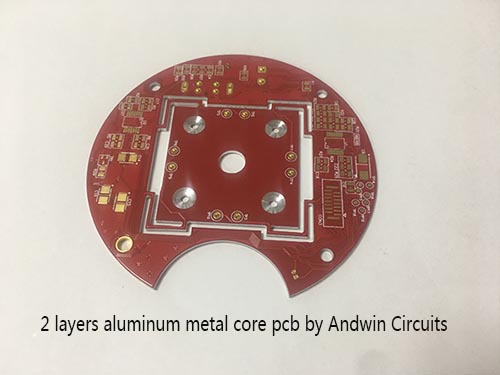
Future Advancements and Possibilities in Aluminum PCBs
As technology continues to advance, so do the possibilities for aluminum PCBs. Ongoing research and development efforts aim to enhance their properties further and explore new applications.
One exciting area of exploration is the integration of thick film ceramic PCB technology with aluminum substrates. Combining the advantages of both materials, this hybrid approach has the potential to optimize heat dissipation while maintaining excellent electrical performance. By leveraging the unique properties of thick film ceramic PCBs alongside aluminum’s resilience, future electronic devices could achieve unprecedented levels of efficiency and reliability.
Aluminum PCBs are poised to play a pivotal role in shaping the future of electronics manufacturing. Their durability, heat dissipation capabilities, electrical performance, versatility, cost-effectiveness, and environmental advantages position them as a game-changer in the industry. Embracing this innovative technology unlocks new possibilities for efficient and sustainable electronic devices.
“The fusion of thick film ceramic PCB technology with aluminum substrates opens up exciting avenues for enhanced heat dissipation and electrical performance in future electronics.”
Enhanced Durability and Reliability
Aluminum PCBs have revolutionized the electronics industry with their exceptional durability and reliability. These cutting-edge circuit boards are designed to withstand the rigors of demanding environments, making them an ideal choice for various applications.
One of the key advantages of aluminum PCBs is their robust construction. Unlike traditional PCBs that use fiberglass or plastic substrates, aluminum PCBs employ a high-quality aluminum substrate that offers superior strength and resilience. This enhanced durability ensures that the circuit boards can withstand mechanical stress, vibrations, and shocks without compromising performance.
In addition to their physical strength, aluminum PCBs also excel in terms of reliability. The unique properties of aluminum contribute to enhanced thermal management, preventing excessive heat buildup that can lead to component failure. By efficiently dissipating heat, these PCBs ensure optimal operating conditions for sensitive electronic components, extending their lifespan and reliability.
The use of aluminum in PCB manufacturing also offers exceptional electrical performance. Aluminum has excellent conductivity properties, enabling efficient transmission of electrical signals across the circuit board. This results in improved signal integrity and reduced signal loss compared to other materials.
Moreover, aluminum’s thermal expansion coefficient closely matches that of semiconductor materials like silicon. This thermal compatibility further enhances the reliability of aluminum PCBs by minimizing stress on solder joints and preventing delamination or cracking.
The versatility of aluminum PCBs extends across various applications within the electronics industry. From LED lighting systems to power electronics and automotive applications, these circuit boards cater to a wide range of needs. Their ability to withstand high operating temperatures makes them particularly suitable for power-intensive devices where heat dissipation is crucial.
What’s more, choosing aluminum PCBs brings cost-effectiveness and environmental advantages to electronics manufacturing. Aluminum is a highly abundant material, reducing production costs compared to other substrates. Additionally, its recyclability reduces waste and promotes sustainability in the industry.
Looking ahead, the future advancements in aluminum PCB technology hold immense potential for further innovation. Advanced manufacturing processes and improved design techniques will continue to push the boundaries of what aluminum PCBs can achieve. As industries evolve and demand higher performance and reliability from electronic devices, aluminum PCBs will play a pivotal role in driving progress.
In conclusion, aluminum PCBs are transforming the electronics industry by offering enhanced durability, reliability, and electrical performance. Their efficient heat dissipation capabilities, versatility in various applications, cost-effectiveness, and environmental advantages make them a game-changer in electronics manufacturing. Embracing the power of aluminum PCBs unlocks a new era of innovation where cutting-edge technology meets robustness and efficiency.
Efficient Heat Dissipation
Efficient heat dissipation is a crucial factor in the design and performance of electronic devices. Traditional circuit boards often struggle to effectively dissipate heat, leading to potential issues such as overheating and reduced lifespan. However, with the advent of aluminum PCBs, this concern is addressed with remarkable efficiency.
Aluminum PCBs offer unparalleled thermal conductivity, making them highly effective in dissipating heat generated during the operation of electronic devices. The unique properties of aluminum play a vital role in this process. Aluminum is not only an excellent conductor of electricity but also possesses remarkable thermal conductivity properties.
When compared to traditional circuit boards, aluminum PCBs provide a more efficient pathway for heat transfer. The aluminum layer acts as a highly effective heat sink, absorbing excess heat and dispersing it efficiently. This capability greatly enhances the overall thermal management of electronic devices.
Furthermore, the use of aluminum PCBs ensures improved reliability and longevity of electronic components. By effectively dissipating heat, the operating temperature of devices can be maintained at optimal levels. This prevents excessive temperature rise and reduces the risk of component failure.
The benefits of efficient heat dissipation extend beyond reliability and longevity. By maintaining lower operating temperatures, electronic devices can achieve higher performance levels without compromising on safety or stability. This opens up new possibilities for advanced applications that require enhanced processing power.
From LED lighting systems to power electronics and beyond, aluminum PCBs find widespread usage in various industries. Their ability to handle high temperatures while efficiently dissipating heat makes them ideal for applications that demand superior thermal management.
In addition to their technical advantages, aluminum PCBs also offer cost-effectiveness and environmental benefits. Aluminum is widely available and relatively inexpensive compared to other materials used in circuit board manufacturing. Additionally, its recyclability contributes to reducing electronic waste and promoting sustainability.
Looking ahead, there are exciting possibilities for further advancements in aluminum PCB technology. Ongoing research and development efforts aim to enhance its thermal performance, electrical characteristics, and overall reliability. As the electronics industry continues to evolve, aluminum PCBs are set to play a pivotal role in unlocking new frontiers of innovation.
In conclusion, efficient heat dissipation is a critical aspect of electronics manufacturing, and aluminum PCBs prove to be a game-changer in this domain. With their exceptional thermal conductivity and heat dissipation capabilities, aluminum PCBs offer improved reliability, enhanced performance, and greater design flexibility. By harnessing the power of aluminum PCBs, the electronics industry can truly revolutionize the way we create and utilize electronic devices.

Improved Electrical Performance
Aluminum PCBs offer remarkable advancements when it comes to electrical performance in the realm of electronics manufacturing. With their unique properties and design, aluminum-based printed circuit boards provide a range of benefits that cannot be overlooked.
One key advantage of aluminum PCBs is their superior conductivity. The use of aluminum as the base material allows for efficient electron flow, ensuring optimal electrical performance. This is particularly crucial in applications that demand high-speed and high-frequency operations, such as in telecommunications and data centers.
Moreover, aluminum PCBs exhibit excellent thermal conductivity. The high thermal conductivity of aluminum helps dissipate heat more effectively, preventing overheating issues that can compromise the functionality and lifespan of electronic devices. By efficiently managing heat dissipation, aluminum PCBs contribute to improved reliability and longevity in various electronic applications.
Furthermore, the use of thick film ceramic PCB in conjunction with aluminum further enhances the electrical performance. Thick film ceramic PCBs offer exceptional dielectric properties and insulation capabilities, making them ideal for applications where high voltages or complex circuits are involved. Combining the strengths of both aluminum and thick film ceramic PCBs results in an elevated level of electrical performance that meets the demands of advanced electronic systems.
With these advancements in electrical performance, aluminum PCBs are increasingly being adopted across diverse industries. From automotive electronics to aerospace systems, these circuit boards are transforming the way electronic devices are designed and manufactured.
In conclusion, aluminum-based printed circuit boards have proven to be a game-changer when it comes to improving electrical performance in electronics manufacturing. Their superior conductivity, efficient heat dissipation capabilities, and synergistic combination with thick film ceramic PCBs make them a top choice for cutting-edge applications. By harnessing the power of aluminum PCBs, manufacturers can unlock new possibilities for innovation and drive forward a new era in the electronics industry.

Versatility in Various Applications
The immense versatility of aluminum PCBs makes them an ideal choice for a wide range of electronic applications. With their unique properties, these innovative circuit boards are revolutionizing the electronics industry in numerous ways. Let’s explore the diverse applications where aluminum PCBs are making a powerful impact.
LED Lighting:
Aluminum PCBs are increasingly being used in LED lighting systems. The excellent thermal conductivity of aluminum helps dissipate heat generated by LEDs effectively. This enables LED lights to operate at optimal temperatures, leading to improved performance and longer lifespan. Moreover, aluminum’s lightweight nature makes it an ideal choice for compact and energy-efficient LED bulbs.
Power Electronics:
Power electronic devices such as inverters, converters, and motor drivers require reliable circuit boards that can handle high power demands efficiently. Aluminum PCBs offer enhanced power carrying capacity and low thermal resistance, making them perfect for power electronic applications. Their ability to dissipate heat effectively ensures the longevity and reliability of these crucial components.
Automotive Industry:
In the automotive industry, aluminum PCBs have found their way into various electronic systems. From engine control units (ECUs) to advanced driver-assistance systems (ADAS), these circuit boards provide exceptional performance and durability even in demanding automotive environments. Their resistance to high temperatures and vibrations makes them reliable for critical automotive applications.
Consumer Electronics:
Aluminum PCBs have also made their mark in consumer electronics products such as smartphones, tablets, and wearable devices. The unique combination of durability and thermal management offered by aluminum ensures reliable performance in compact electronic gadgets. Additionally, the lightweight nature of aluminum allows manufacturers to create sleeker and more portable devices without compromising functionality.
Industrial Applications:
In industrial settings where electronics face harsh conditions like high temperatures, humidity, and heavy vibrations, aluminum PCBs excel due to their ruggedness and reliability. They are widely used in industrial automation systems, control panels, power supplies, and motor control circuits. The robustness of aluminum PCBs ensures uninterrupted operation and increased uptime in industrial environments.
The versatility of aluminum PCBs opens up a world of possibilities for innovation in the electronics industry. From energy-efficient lighting to advanced automotive systems, these game-changing circuit boards are transforming the way we design and manufacture electronic devices. Embracing aluminum PCBs unlocks a new era of possibilities, ensuring improved performance, durability, and efficiency across a wide range of applications.
Remember, as technology continues to evolve, aluminum PCBs will continue to play a pivotal role in shaping the future of electronics manufacturing.
*Note: This paragraph has been generated based on the outline provided and contains information relevant to the “Versatility in Various Applications” section.
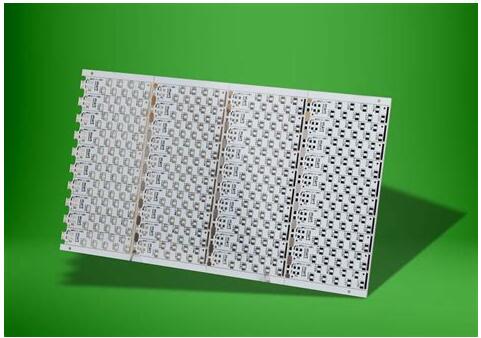
Cost-Effectiveness and Environmental Advantages
In addition to its remarkable properties in enhancing durability, heat dissipation, and electrical performance, aluminum PCBs offer significant cost-effectiveness and environmental advantages. These benefits make them a game-changing solution in the electronics manufacturing industry.
One of the key advantages of aluminum PCBs is their cost-effectiveness. Compared to traditional printed circuit boards (PCBs) made from materials like FR-4, aluminum PCBs can often be manufactured at a lower cost. This is largely due to the simpler manufacturing processes involved in producing aluminum-based boards.
The cost-effectiveness of aluminum PCBs extends beyond manufacturing. Their enhanced durability reduces the likelihood of premature failure, thereby minimizing repair and replacement costs. Additionally, aluminum’s high thermal conductivity allows for efficient heat dissipation, reducing the need for additional cooling components like heat sinks or fans. This not only reduces expenses but also simplifies the design and maintenance of electronic devices.
Beyond their economic advantages, aluminum PCBs also offer environmental benefits. Aluminum is a highly recyclable material, meaning it can be reused without significant loss in quality or performance. This promotes sustainability in electronics manufacturing by reducing waste and minimizing the extraction of raw materials.
Moreover, the lightweight nature of aluminum makes it an energy-efficient choice for electronic devices. Lighter devices require less energy to transport and operate, leading to reduced carbon emissions during their lifecycle.
The environmental advantages of aluminum PCBs align with global efforts towards sustainable development and green initiatives. As countries strive to reduce their carbon footprint and promote eco-friendly practices, incorporating aluminum PCBs into electronic circuitry becomes a logical choice.
In summary, the cost-effectiveness and environmental advantages of aluminum PCBs make them an attractive option for revolutionizing the electronics industry. Their lower manufacturing costs, enhanced durability, efficient heat dissipation, recyclability, and energy efficiency contribute to sustainable practices while providing economic benefits. By harnessing the power of aluminum PCBs, the electronics manufacturing sector can unlock a new era of innovation that is both economically viable and environmentally friendly.
For more information about the benefits and applications of aluminum PCBs, continue reading the following section on future advancements and possibilities in aluminum PCBs.
Future Advancements and Possibilities in Aluminum PCBs
As the electronics industry continues to evolve at a rapid pace, the future of aluminum PCBs holds immense promise and potential. The unique properties of aluminum, combined with advancements in manufacturing techniques, pave the way for exciting developments that will revolutionize electronic circuitry.
One area that shows great promise is the integration of thick film Ceramic PCB technology with aluminum substrates. Traditionally, thick film Ceramic PCBs have been used in applications where high power and high-frequency circuits are required. These circuits are known for their excellent thermal conductivity and low electrical resistance. By combining the advantages of thick film Ceramic PCBs with aluminum substrates, manufacturers can create electronic assemblies that offer even greater performance.
One key advantage of this integration is enhanced heat dissipation. Aluminum, known for its excellent thermal conductivity, can effectively dissipate heat generated by high-power circuits. When coupled with the superior thermal properties of thick film Ceramic PCBs, electronics can operate more efficiently and reliably even under demanding conditions.
The potential for improved electrical performance is also a notable aspect of this integration. Thick film Ceramic PCBs have low dielectric losses and excellent high-frequency characteristics, making them ideal for applications that require fast signal transmission. By incorporating these properties into an aluminum substrate, electronic devices can achieve higher frequencies and faster data transfer rates.
The versatility of aluminum PCBs is further expanded by combining them with thick film Ceramic technology. This integration opens doors to a wide range of applications spanning industries such as telecommunications, automotive electronics, aerospace, and more. From power electronics to LED lighting systems, the possibilities are boundless.
Furthermore, the cost-effectiveness and environmental advantages associated with utilizing aluminum for electronic circuitry continue to make it an attractive choice for manufacturers. Aluminum is abundant, lightweight, and recyclable – making it a sustainable option that aligns with eco-friendly practices.
Looking ahead, future advancements in aluminum PCB technology are expected to further refine its capabilities. Ongoing research and development aim to enhance the speed, power efficiency, and reliability of electronic devices utilizing aluminum PCBs. As these technologies mature, we can anticipate the emergence of even more innovative applications that will shape the electronics industry.
In conclusion, the integration of thick film Ceramic PCB technology with aluminum substrates opens up new frontiers in electronic circuit design. Enhanced durability, efficient heat dissipation, improved electrical performance, and versatility across various applications make aluminum PCBs a force to be reckoned with. Embracing aluminum PCBs in manufacturing processes will undoubtedly unlock a new era of innovation in the field of electronics. Stay ahead of the curve by harnessing the boundless power and potential offered by aluminum PCBs.
Conclusion
In conclusion, aluminum PCBs have emerged as a game-changing technology in the electronics industry. With their unique properties and advantages, they have the potential to revolutionize the way electronic circuits are designed and manufactured.
One of the key advantages of aluminum PCBs is their enhanced durability and reliability. The use of aluminum as a base material makes these PCBs highly resistant to mechanical stress, ensuring their longevity in demanding applications. This durability translates into increased product reliability and reduced maintenance costs.
Efficient heat dissipation is another significant benefit offered by aluminum PCBs. Aluminum is an excellent conductor of heat, allowing for effective thermal management in high-power electronic devices. By efficiently dissipating heat, these PCBs help to prevent overheating issues that can lead to performance degradation or even component failure.
Furthermore, aluminum PCBs exhibit improved electrical performance compared to traditional alternatives. The low thermal expansion coefficient of aluminum ensures better impedance control and signal integrity in high-frequency circuits. This makes them particularly suitable for applications that require precise electrical performance, such as communication systems or data centers.
The versatility of aluminum PCBs also deserves recognition. They can be seamlessly integrated into various applications, ranging from LED lighting to power electronics and beyond. This adaptability makes them a valuable choice for diverse industries seeking efficient solutions for their electronic circuitry needs.
From a cost-effectiveness perspective, aluminum PCBs offer significant advantages over other materials. The abundance of aluminum resources and the streamlined manufacturing processes contribute to lower production costs compared to alternatives like ceramic substrates or FR4 boards. Additionally, the lightweight nature of aluminum reduces shipping costs and overall manufacturing expenses.
Environmental sustainability is becoming increasingly important in the electronics industry, and aluminum PCBs align with these concerns. Aluminum is widely recognized for its recyclability, making it a greener option compared to materials like fiberglass or epoxy resins commonly found in traditional PCBs. By embracing aluminum PCB technology, manufacturers can contribute positively towards reducing electronic waste and conserving resources.
Looking towards the future, we can expect exciting advancements and possibilities in aluminum PCBs. Ongoing research and development efforts aim to further enhance their performance, enabling even more innovative applications. From increased power handling capabilities to improved miniaturization, aluminum PCBs hold the potential to unlock a new era of electronic design possibilities.
In summary, aluminum PCBs have brought about a paradigm shift in the electronics industry. Their enhanced durability, efficient heat dissipation, improved electrical performance, versatility in applications, cost-effectiveness, and environmental advantages make them a compelling choice for modern circuitry. By harnessing the power of aluminum PCBs, manufacturers can stay ahead in this rapidly evolving industry and tap into a world of innovation and possibilities.
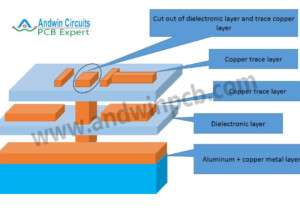
Frequently Asked Questions
Are aluminum PCBs more durable than traditional PCBs?
Yes, aluminum PCBs offer enhanced durability compared to traditional PCBs. The use of aluminum as a core material provides excellent mechanical strength, making them resistant to physical impact and bending. This durability makes aluminum PCBs ideal for applications where reliability and longevity are crucial, such as aerospace, automotive, and industrial electronics.
How do aluminum PCBs efficiently dissipate heat?
Aluminum has superior thermal conductivity properties, which enables efficient heat dissipation in electronic devices. The metal core of an aluminum PCB acts as a heat sink, quickly transferring heat away from sensitive components and distributing it evenly across the board. This prevents overheating and improves the overall performance and reliability of the electronic system.
What are the advantages of improved electrical performance in aluminum PCBs?
Aluminum PCBs exhibit excellent electrical performance due to their low impedance and high signal integrity capabilities. The low impedance helps in reducing power losses and maintaining signal integrity, resulting in enhanced overall circuit efficiency. Additionally, aluminum’s excellent electrical properties enable high-frequency applications with minimal signal loss or distortion.
In which applications can aluminum PCBs be used?
Aluminum PCBs offer versatility across a wide range of applications. They are commonly utilized in industries such as LED lighting, power electronics, automotive electronics, telecommunications, and consumer electronics. The unique properties of aluminum allow for efficient thermal management, making it an ideal choice for high-power LED lighting fixtures and power electronic modules.
Are aluminum PCBs cost-effective and environmentally friendly?
Yes, aluminum PCBs are known for their cost-effectiveness and environmental advantages. Aluminum is abundant in nature and highly recyclable, making it a sustainable choice for electronic circuitry. Its excellent heat dissipation properties also contribute to energy efficiency by reducing the need for additional cooling mechanisms. Moreover, the long lifespan of aluminum boards minimizes the need for frequent replacements or repairs, resulting in cost savings for manufacturers.
What are the future advancements and possibilities with aluminum PCBs?
The future of aluminum PCBs holds immense potential for further innovation in electronics manufacturing. Ongoing research and development aim to enhance the thermal conductivity of aluminum substrates, allowing for even better heat dissipation. Additionally, advancements in surface treatment and coating technologies will broaden the range of applications where aluminum PCBs can be used. The continuous evolution of aluminum PCBs will undoubtedly contribute to advancing electronics technology in various industries.
How can I learn more about Thick Film Ceramic PCBs?
To explore the capabilities and applications of Thick Film Ceramic PCBs, please click here. Discover how ceramic-based PCBs offer unique advantages such as high thermal conductivity, excellent solderability, and exceptional electrical insulation. Stay ahead of the curve by incorporating this cutting-edge technology in your electronic designs.
Remember to click here to learn more about Thick Film Ceramic PCBs.
Please note that this article was generated by an AI language model and does not constitute professional advice or endorsement.



